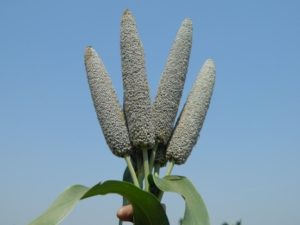Micronutrient malnutrition because of iron and zinc deficiencies is a serious public health problem in low-and middle-economy countries worldwide. In India alone, about 80% of the pregnant women, 52% of non-pregnant women, and 74% of children in the 6-35 months age group suffer from iron deficiency. About 52% of children below 5 year are zinc deficient.
Iron deficiency causes varying degrees of impairment in cognitive performance, and learning ability, lowered work capacity, and pregnancy complications (e.g., maternal mortality, and babies with low birth weight). Zinc deficiency in children causes stunting, makes them vulnerable to diarrhoea, pneumonia, and can lead to death from these infections.
Crop biofortification, which refers to the breeding of cultivars with higher levels of micronutrients, is increasingly being recognized as a cost-effective and sustainable approach to overcome these deficiencies in the food chain.
Spearheaded by HarvestPlus Program of CGIAR, global crop biofortification research was initiated by several CGIAR centers on 12 crops, including pearl millet. This has led to several success stories based on which HarvestPlus was recognized with the World Food Prize in 2016.
Under the biofortification program, the International Crops Research Institute for the Semi-Arid Tropics (ICRISAT) and Mahatma Phule Krishi Vidyapeeth jointly developed a high-iron variety of pearl millet, called Dhanashakti, which was released in 2012 in Maharashtra and later in 2013 across India, making it the first mineral biofortified product of any crop cultivar released in India.
Read the rest of the article on ICRISAT's Agribuzz, or watch the author in the video below explaining the qualities of biofortified pearl millet.
**The author is a Consultant with HarvestPlus, and former Principal Scientist and Director, HarvestPlus-India Biofortification Program, ICRISAT.
